Aquaponics nutrient deficiencies can become a big problem in your system, affecting plant growth and potentially ruining your harvest. Plant deficiencies are common even for traditional gardening or farming methods. Aquaponics plant deficiencies occur when various nutrients are not readily available in the water or fish waste used to feed the plants. Nutrient deficiencies are one of the most common problems in aquaponics. Aquaponics plant deficiencies can affect growth and make plants more susceptible to insects and diseases. The first step in preventing or treating an aquaponics nutrient deficiencies is recognizing you have a problem and identifying which nutrient your plants need.
Potassium Deficiency in Aquaponics
Potassium is an essential nutrient for plants. It is needed for plant growth, including healthy root development and seed and fruit growth. Lack of potassium is a common problem in plants that produce vegetables, even when planted in soil. All plants need potassium and can be affected by lower levels of this key nutrient.
Potassium Deficiency Signs:
- Browning or burnt look to leaf tips
- Curling of leaf tips
- Yellowing between leaf veins
- Purple spots on underside of leaves
Potassium deficiency in aquaponics requires treatment because the absence of sufficient potassium negatively affects photosynthesis, which can hurt all areas of plant growth. It also makes the plant increasingly susceptible to infection or infestation. Additionally, severe potassium deficiency can lead to plant death.
Iron Deficiency in Aquaponics
Iron is also important for plant growth and health. It is used to produce chlorophyll, along with other enzyme production functions. This impacts the plant’s use of oxygen and affects the green color of leaves and stems. Certain types of plants are particularly prone to low iron, including acid-loving plants like hollies, blueberries, and azaleas. Low iron is an especially common in aquaponics nutrient deficiencies.
Iron Deficiency Signs:
- Yellowing of leaves in between green veins
- Spidery or weblike pattern on leaves
- Whitish coloring to leaves
- Stunted plant and leaf growth
Iron deficiency in aquaponics systems requires proper treatment or the plants in the system can become stunted. This could cause them to fail to produce healthy new growth, fail to blossom or produce fruit, and can cause the entire plant to die back. A lack of iron in your aquaponic system will harm all the plants growing there, not just the ones that are prone to iron issues.
Magnesium Deficiency in Aquaponics
Another of the common aquaponics plant deficiencies is low magnesium. Magnesium plays an essential role in many of a plant’s internal functions. Without enough magnesium, chlorophyll can start to break down or degrade in older leaves. This is a common problem for tomatoes, raspberries, grape vines, and flowers like roses and rhododendrons.
Magnesium Deficiency Signs:
- Yellowing or reddish brown tint to leaves
- Marbled appearance of leaf surface
- Curling leaves
- Early leaf loss or fall
Treating a magnesium deficiency in aquaponics is important to overall plant health and growth. Lack of magnesium negatively affects the plant’s ability to complete photosynthesis. This can interrupt growth or prevent an otherwise healthy plant from thriving or producing flowers, fruits, or vegetables.
Phosphorus Deficiency in Aquaponics
Phosphorus is used by plants for energy production, storage, and transfer. It impacts root development, flowering, seed production, and fruit or vegetable growth. Phosphorus is necessary for plants to grow to maturity and to flower within a normal timeframe. In terms of aquaponics nutrient deficiencies, phosphorus issues can be the most difficult to diagnose.
Phosphorus Deficiency Signs:
- May have no obvious symptoms
- Stunting of plant growth, especially early growth
- Darker green leaves, especially near base of plant
- Purplish or reddish color to leaves
A phosphorus deficiency in aquaponics can be a serious issue. It stunts plant growth and can severely delay or prevent flower, fruit, vegetable, and seed production. Low phosphorus levels can also affect the harvestability of crops, causing low or no yield.
Calcium Deficiency in Aquaponics
Another nutrient essential for plant health that could be the cause of aquaponics plant deficiencies is calcium. Calcium is essential for healthy growth and strong cell walls. This is especially important in the production of flowers, fruits, and vegetables. Calcium is what helps plants maintain their strength and shape. Calcium deficiency can affect any plant, but squash, tomatoes, and peppers are commonly susceptible.
Signs of Calcium Deficiency:
- Withering or death of young leaves, flowers, or fruit
- Blackening of edges of leaves, flowers, or fruit
- Blossom end rot
- Deformed new growth leaves and/or fruits
Treating a calcium deficiency in aquaponics requires swift action to prevent low calcium from ruining harvestable vegetables. Blossom end rot makes vegetables and fruits inedible, and even a minor calcium deficiency can turn vegetable and fruits mushy. Low calcium levels can also stunt plant growth and cause plant death.

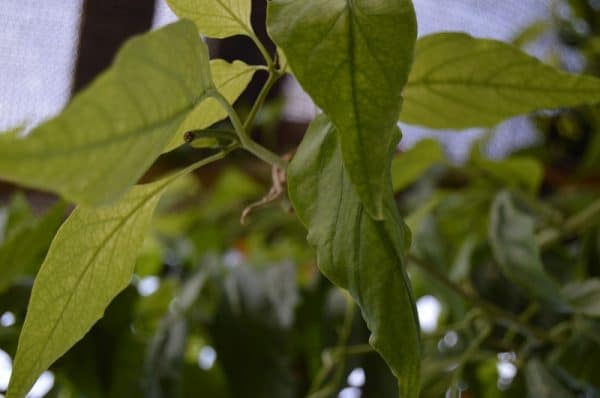


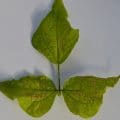

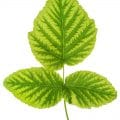

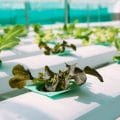

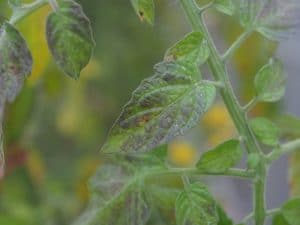
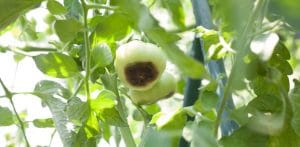
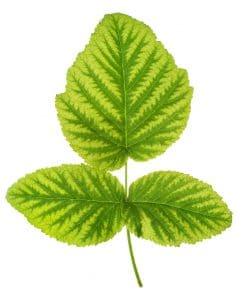
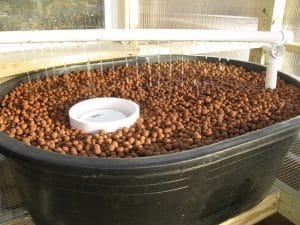
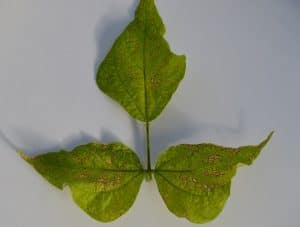
Why there is no solution to the problem mention, how to fix deficiency in aquaponics.?
Each deficiency is explained further in additional articles. Find the links below.
Potassium Deficiency in Aquaponics
Iron Deficiency in Aquaponics
Magnesium Deficiency in Aquaponics
Phosphorus Deficiency in Aquaponics
Calcium Deficiency in Aquaponics